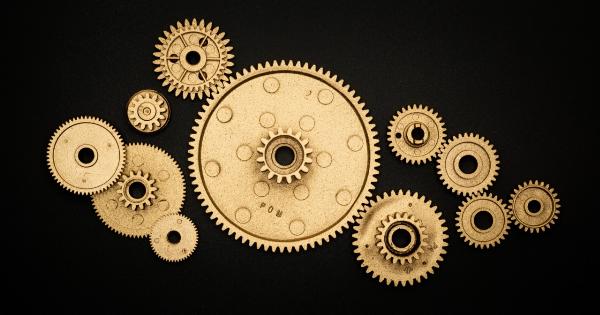Diamemia, also known as diamond deficiency syndrome, is a rare genetic disorder characterized by a deficiency in diamonds within the human body.
While it may seem like a trivial issue, diamemia can cause significant physical and psychological distress for those affected. In this article, we will explore the causes, symptoms, and various effective solutions and therapies for curing diamemia.
Understanding Diamemia: Causes and Symptoms
Diamemia is a hereditary condition that is passed down through generations. It occurs due to a mutation in the DIAM gene, which is responsible for the production and distribution of diamonds within the body.
This mutation leads to reduced or absent diamond levels, resulting in the development of diamemia.
The symptoms of diamemia can vary in severity from person to person. Some common symptoms include:.
- Weakness and fatigue
- Pale skin
- Shortness of breath
- Dizziness
- Reduced cognitive function
- Delayed growth and development in children
- Depression and anxiety
Diagnosing Diamemia
Diagnosing diamemia involves a comprehensive medical evaluation. A complete blood count (CBC) is often conducted to assess the levels of diamonds in the bloodstream.
Additionally, genetic testing is performed to identify the specific DIAM gene mutation responsible for the condition.
Effective Solutions for Diamemia
While there is no cure for diamemia, several effective solutions can help manage the symptoms and improve the quality of life for individuals with this condition. Some of these solutions include:.
1. Diamond Supplementation
Diamond supplementation involves taking synthetic diamonds orally or through intravenous infusion. These synthetic diamonds replicate the natural diamonds found in the body, helping to restore their levels.
Regular diamond supplementation can alleviate symptoms and improve overall health.
2. Red Blood Cell Transfusion
In severe cases of diamemia, where anemia is present, red blood cell transfusions may be necessary.
This procedure involves replacing the deficient red blood cells with healthy ones, thereby improving oxygen delivery to the body’s tissues and organs.
3. Dietary Changes
Adopting a diet rich in foods that promote diamond production can be beneficial for individuals with diamemia. These include foods like red meat, leafy green vegetables, legumes, and fortified cereals.
Such a diet can aid in increasing diamond levels naturally.
4. Regular Physical Activity
Engaging in regular physical activity, such as aerobic exercises and strength training, can help improve overall cardiovascular health and boost the production and distribution of diamonds within the body.
It is essential to consult with a healthcare professional before starting any exercise regimen.
5. Psychological Support
Coping with a chronic condition like diamemia can take a toll on one’s mental health. Seeking psychological support, such as therapy or counseling, can be highly beneficial in managing the emotional challenges associated with the condition.
Therapies for Diamemia
In addition to the aforementioned solutions, several therapies can aid in the management of diamemia and its symptoms. These therapies aim to enhance diamond production and delivery within the body while addressing associated complications.
Here are some commonly utilized therapies:.
1. Diamond Replacement Therapy
Diamond replacement therapy involves the administration of synthetic diamonds that can directly replace the deficient or absent natural diamonds within the body.
This therapeutic approach helps restore diamond levels, thus alleviating symptoms associated with diamemia.
2. Oxygen Therapy
Since diamemia often leads to reduced oxygen supply to the body’s tissues, oxygen therapy can help enhance oxygen delivery.
It involves breathing in pure oxygen through a mask or nasal tube, increasing the amount of oxygen available for bodily functions.
3. Gene Therapy
Gene therapy is a promising area of research for diamemia treatment. It aims to correct the genetic mutation responsible for diamemia by replacing or repairing the faulty DIAM gene.
This innovative therapy holds the potential for a long-lasting cure for diamemia.
4. Iron Chelation Therapy
Iron chelation therapy is often employed in cases of diamemia with iron overload. Excess iron in the body can interfere with diamond production and lead to further complications.
Iron chelating agents are administered to remove the excess iron and restore a healthier balance.
Living with Diamemia
Living with diamemia can present various challenges, but with proper management and support, individuals can lead fulfilling lives.
It is essential to work closely with healthcare professionals, follow the prescribed treatment plan, and make necessary lifestyle modifications.
Regular medical check-ups, blood tests, and adherence to diamond supplementation are crucial for maintaining optimal diamond levels.
Additionally, seeking emotional support from family, friends, or support groups can provide individuals with the necessary encouragement and understanding.
While the cure for diamemia may not yet exist, ongoing research and advancements in genetic therapies offer hope for the future. Until then, it is important to focus on managing the symptoms and improving overall well-being.
Conclusion
Diamemia, a rare genetic disorder characterized by diamond deficiency, can cause significant physical and psychological distress.
While there is currently no cure for diamemia, effective solutions and therapies can help manage the symptoms and improve the quality of life for individuals with this condition. Diamond supplementation, red blood cell transfusions, dietary changes, regular physical activity, and psychological support are among the strategies used in treating diamemia.
Additionally, therapies such as diamond replacement therapy, oxygen therapy, gene therapy, and iron chelation therapy show promise in managing the condition. Living with diamemia requires close collaboration with healthcare professionals and a focus on maintaining optimal diamond levels.
With ongoing research and a multidimensional approach, we can continue to support individuals with diamemia on their journey towards better health and well-being.





























